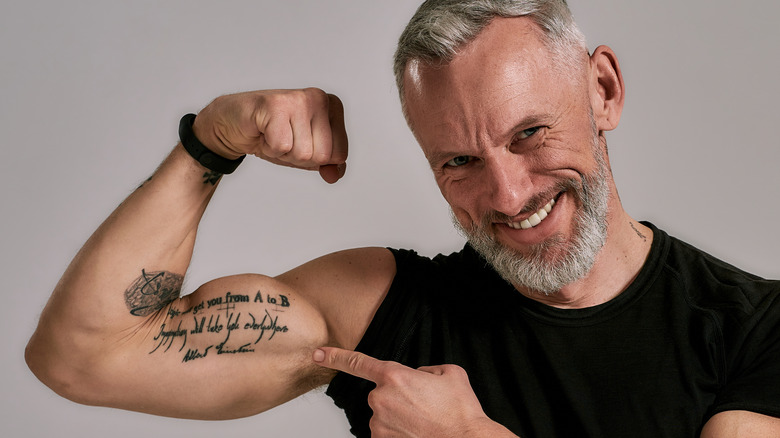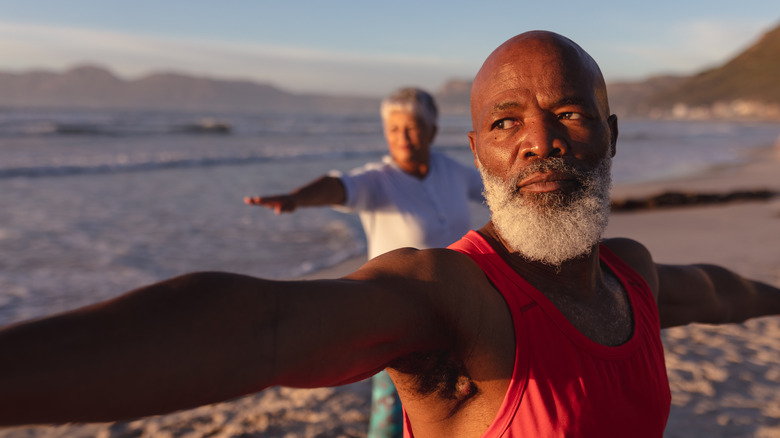New Study Reveals The Benefits Of Strength-Training For Older Adults
Want to live longer? It turns out pumping iron could help extend your life expectancy. Don't like the gym? Think you're too old for weight-lifting? No worries, as you don't have to lug around heavy weights to get the benefits of strength training. Plenty of everyday activities offer a chance to use your muscles in beneficial ways that could help you enjoy more years. You probably already know that cardio exercise is good for your heart, blood pressure, and brain (per UT Southwestern Medical Center). Now, a study is revealing the benefits of strength training for older adults.
The Centers for Disease Control and Prevention (CDC) says falls are the leading cause of injury-related deaths among older people. And the 2018 Physical Activity Guidelines Advisory Committee says muscle-strengthening activities can help reduce the risk of falls and injury from falls. A new 2022 study, published in JAMA Network Open, showed that actively using your muscles a couple of times a week can help all older adults stay healthier longer, including those over age 85.
Strength training could help you live longer
The 2022 study, published in the latest issue of JAMA Network Open, examined how muscle-strengthening activities (MSAs) could improve all-cause deaths for older people, not just falls. Researchers looked at people aged 65 and older who performed MSAs, moderate to vigorous aerobic physical activities (MVPA), or both. The results showed that of the 115,489 participants, those who performed MSAs two to six times per week lived longer than those who did less than two.
Dr. Bryant Webber, an epidemiologist in the Division of Nutrition, Physical Activity, and Obesity at the CDC, told CNN, "Those who met the muscle-strengthening guideline only (versus neither guideline) had (a) 10% lower risk of mortality, those who met the aerobic guideline only had 24% lower risk of mortality, and those who met both guidelines had 30% lower risk." Older adults can use structured or non-structured MSAs to reap the benefits of strength training.
According to the U.S. Department of Health and Human Services, structured MSAs include using equipment like resistance bands, hand-held weights, and weight machines. You can also use your own body weight for strength training exercises like squats, planks, pull-ups, push-ups, lunges, and some yoga poses. Nonstructured MSAs could include gardening, carrying groceries, and tai chi movements. If you have joint pain or other conditions that make MSAs difficult, swimming is an excellent muscle-building exercise for your entire body, and it is easy on joints, too (per Play by Decathlon).


